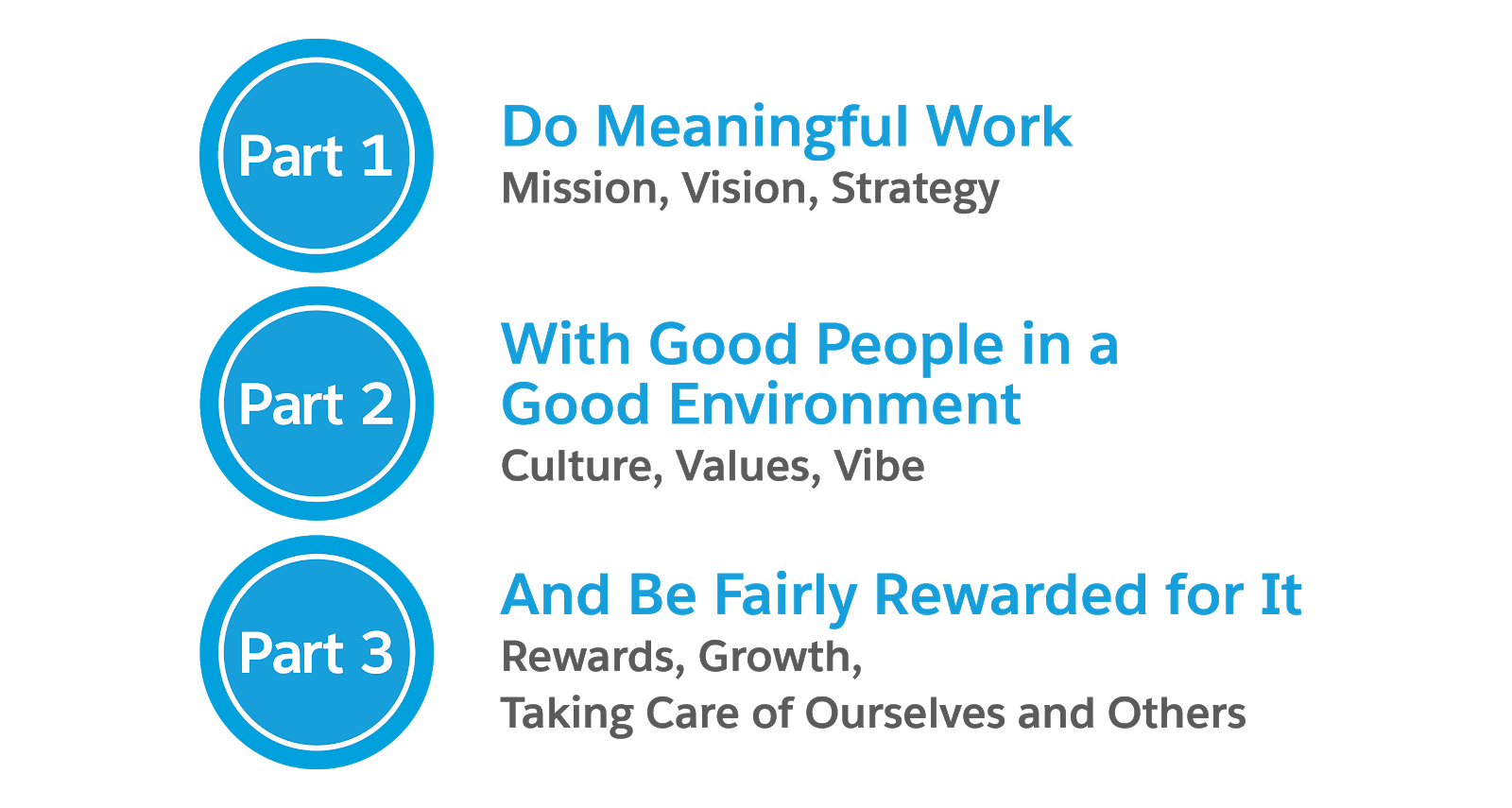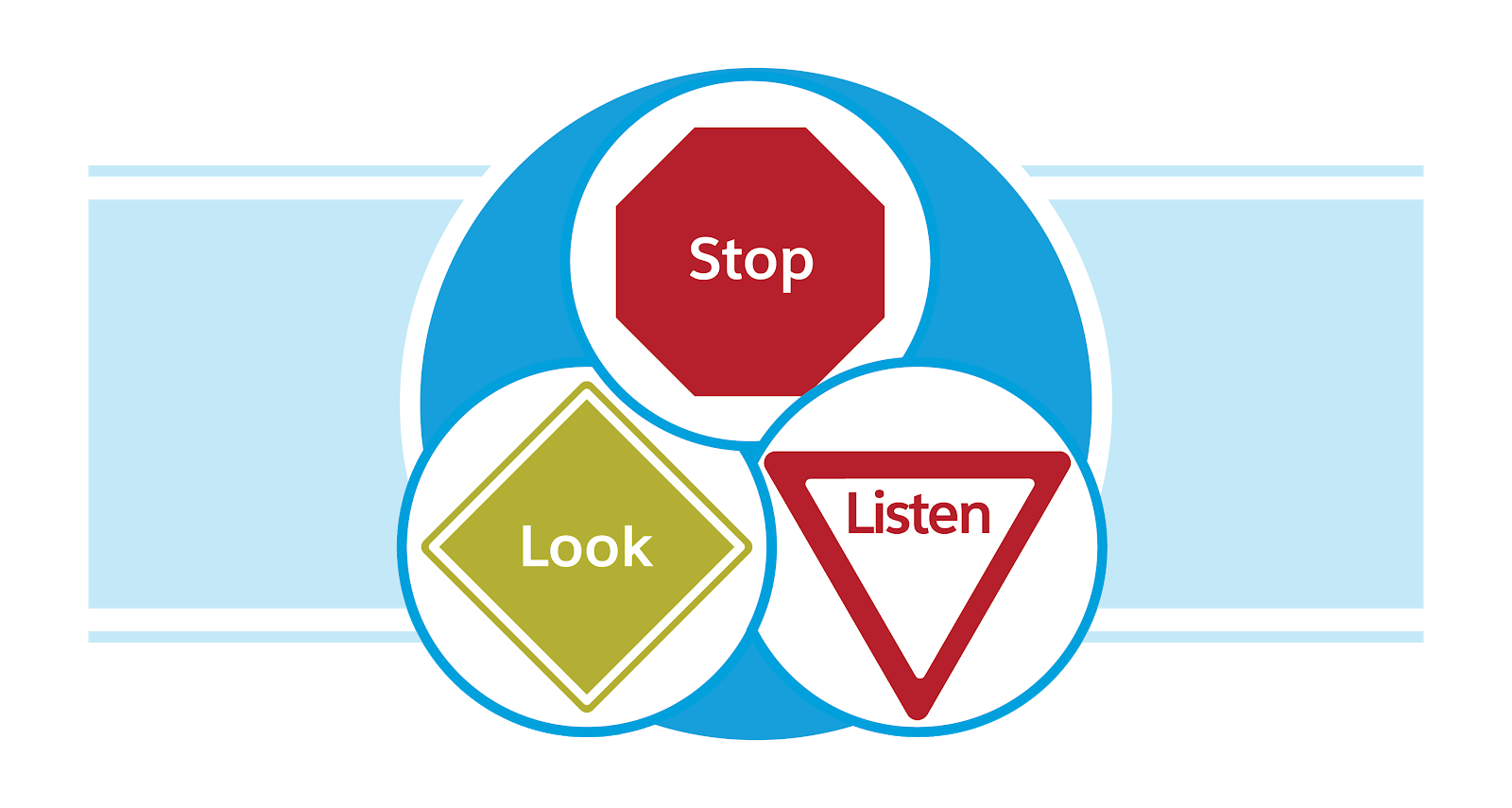Engage Your Team
Learning Objectives
After completing this unit, you’ll be able to:
- Identify what motivates each of your team members.
- Describe how to conduct an effective engagement conversation.
- Implement an engagement plan that includes tailored rewards and recognition.
Identify What Motivates Employees
It takes time, honest conversations, and flexibility to identify and understand what makes your reports feel fulfilled. But putting in the work and unlocking your employees’ motivations helps you frame projects, ideas, and conversations in a way that excites them to do their jobs well.
According to motivation expert and author Daniel Pink, we can sum up what motivates us as humans with the awesome acronym AMP, which stands for:
- Autonomy—the ability to work independently and be self-directed
- Mastery—opportunities to get better at what they do
- Purpose—a belief and sense that their work contributes to something bigger
By AMPing up your approach to your employees and getting out of their way, you are giving them the opportunity to be their best selves and do their best work. With a sense of greater purpose in mind, they’ll enjoy devoting time and effort to making a measurable impact, which will in turn benefit the business. It’s a win-win-win situation.
At Salesforce, AMPing up our teams is ingrained into our Salesforce culture and management. For example, when it comes to autonomy, our managers motivate and champion employees by enabling team members to determine how to complete their work. And it’s not just the how, but also the where, because employees have the flexibility to work at home when needed or use different spaces on our campus to find a quiet area or collaborate to get work done.
To promote mastery, we offer our employees opportunities to advance their skill sets through training and development opportunities. When it comes to purpose, our V2MOM process helps employees align and connect their work in a meaningful way to the company-wide goals. And our Salesforce values—Trust, Customer Success, Innovation, Equality, and Sustainability—help our employees walk the talk of making our work environment and the world around us a better place.
We believe so strongly in these principles that we’ve made them core to our three-part employee value proposition (EVP), which is our promise of what employees can expect from us in exchange for their time and talents.

What does that look like? Check it out:
| Employees are motivated by: | At Salesforce, this translates to: |
|---|---|
| The opportunity to do meaningful work. |
Employees being able to connect to their individual work and impact to the company’s vision and success in a meaningful way. |
| Working in a good environment with good people. |
Working within our Salesforce culture with great coworkers. |
| Being fairly rewarded for it. |
Opportunities to grow careers, take care of oneself and others, and get paid fairly. |
In addition to promoting autonomy, mastery, and purpose, you can motivate your employees in the following ways:
- Make spending quality time with your employees a priority.
- Show your appreciation for a job well done.
- Tailor your approach to a person’s style and work preferences.
- Become a better listener.
- Find opportunities for employees to shine and grow.
- Provide visibility, rationale, and input into decision-making.
- Give credit where credit is due.
Now that you have a handle on your role in motivating your team and a good sense of where they fall on the engagement spectrum, we’re going to look at how to address engagement on an ongoing basis.
Step 3: Conduct Engagement Conversations
Sitting down with your employee for a 1:1 conversation is probably baked into your schedule on a regular basis. But how often is that conversation focused solely on tactical updates and project development questions?
Engaging your employees means making room for big ideas in your regular 1:1 conversation. We know that when the pressure of a deadline or an important deal is bearing down on you, it’s hard to zoom out from the task at hand.
So how do you set up the conversation? Start by providing context. Make sure that employees know where they fit into the organization and why their role is important, and that you, as their manager, value their efforts. Here’s one way you could open up the dialogue:
“I’d like for us to chat. Your contribution to our team and this company is important. I want to make sure that you feel fulfilled and engaged by what you’re working on.”
Great! Now you’ve created a runway for this conversation to really take off. Your next step is to ask open-ended questions to better understand how your employee is feeling and what they’re thinking:
- What else can we do to help you thrive here?
- Do you like what you’re doing now?
- What else would you like to be doing in your career?
- What’s the most rewarding part of your job?
- What about this position attracted you?
- What things would you like to do more of in your job?
- What do you need from me to help stay motivated in your job?
Let the employee drive the conversation. Make note of the things that provoke a strong reaction, and focus on these areas after the conversation. To wrap things up, circle back to how you opened the conversation by.
- Reminding them how they fit into the team and company and why they matter.
- Reiterating the things that are important to them. (Make a point to achieve a few of their requests.)
- Setting up a time to have a check-in about your progress toward these engagement goals monthly or quarterly.
If you’re having a check-in, follow-up, or start-to-finish development conversation with your report, here’s how you can use the familiar Stop, Look, Listen safety model to get the most out of the dialogue.

-
Stop—Press pause on “execution mode” to make sure that your employees feel like what they are doing has a purpose and that you’re in alignment on its importance. Not sure how to communicate this?
- Constantly connect what they are doing now to the company’s vision as a whole.
- Coach with consideration for the organization at large when you give feedback.
- When possible, allow an employee to own a project from beginning to end to give a sense of completion.
- Convey your sense of positivity and excitement for the future as much as possible.
- Look —Watch people’s body language and responsiveness when they describe how they’re feeling about their current projects.
- Listen —Observe the 80/20 rule to ensure that your employees are doing the majority (80%) of the talking. Listen for what they are saying (and not saying) to get a sense of their everyday engagement.
If you take the time to listen and understand how your directs are doing, it demonstrates your investment in their growth and future with the company.
Step 4: Make an Engagement Plan and Follow Up
After the meeting, follow up with a thank-you email and calendar invite one month later outlining what you spoke about and agreed on. Your employee then trusts that you welcome big thinking and feels more comfortable sharing ideas that go beyond the day-to-day “getting it done.” This kind of thinking also helps you spot oncoming disengagement danger. Read on to learn about how recognizing improvement is also an important aspect of strengthening engagement.
Reward and Recognize
Showing some love to your employees when they do something great is one of the easiest and most important things to do as a manager. In a recent report conducted by The Energy Project and Harvard Business Review, employees overwhelmingly confirmed the importance of recognition:
- 53% linked recognition to higher focus.
- 58% linked recognition to higher engagement.
- 71% linked recognition to increased enjoyment at work.
In this same study, when employees were asked what their leaders could do more of to help them feel more engaged, 58% said “Give more recognition!” Another recent Harvard study also found that the best performing teams have team members and a manager who give each other six times more recognition than constructive feedback.
That being said, it’s important to keep in mind that everyone responds to recognition differently. Some folks love getting a shout-out in a group setting. Others would prefer a personal, “Way to go!” It’s not just about recognizing others. It’s about doing it in a way that means the most to each person. To match the reward and recognition to the employee, it’s helpful to consider your employee’s:
- Interests
- Needs
- Preferences
- Values
- Communication Style
But the best way to find out how individuals want to be recognized is to simply ask! For example, you might ask:
- How do you like to be recognized?
- What works? What makes you uncomfortable?
- What means the most to you?
- What makes you feel appreciated?
In our next unit, we look at what to do when, despite your best efforts, an employee is about to “jump ship” and how you can keep the person from being the next one overboard!